Women’s access to higher education: An overview (1860-1948)
Table of Contents
The Langham Place Group
The Langham Place Group campaigned on a variety of women’s issues from around 1857 to 1866. The Group comprised a number of like-minded friends (all privileged women with both resourcefulness and resources) who were moved by the unfair treatment and limitations faced by women and determined to make things better. They began to develop what is seen as a politics of ‘liberal feminism’; this embraced not just education but suffrage for women, employment opportunities, and reform of the law regarding married women’s property (see The Married Women’s Property Acts). The Group took its name from the offices of the English Woman’s Journal, the periodical through which the Group expressed their views, which was based at 19 Langham Place, London W1.
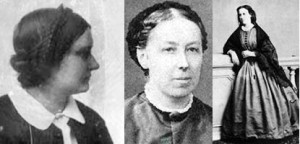
The Langham Place Group.
Barbara Bodichon, Emily Davies and Bessie Rayner Parkes.
The origin of the Group was in the friendship of two young women, both from Unitarian dissenting families, Barbara Leigh Smith (later Bodichon) and Bessie Rayner Parkes. They were soon joined by Emily Davies. The Garrett sisters, Elizabeth and Millicent, were also frequent visitors to Langham Place. A story is told that one day, while brushing their hair, Emily Davies and Elizabeth and Millicent Garrett were chattering about the problems facing women and decided that they would have to do something about it. Emily agreed to open the universities to women, Elizabeth was assigned to open up the professions, beginning with medicine, and Milly (who was just thirteen) was given the task of winning the vote. And so they did. In due course Emily co-founded Girton, the first college for women at Cambridge, Elizabeth Garrett Anderson became one of the first woman doctors, and Millicent Fawcett led the constitutional campaign for women’s suffrage.
The Ladies of Langham Place soon came to believe that education was the key that underpinned their other campaigns. Education was a particular grievance for middle-class women who tended still to be taught at home, often by governesses who were not well-tutored themselves. A first step to redressing this had been taken when male teachers at Kings College, London, supported by the Governesses’ Benevolent Association, opened Queens College in Harley Street which offered to governesses free evening classes in academic subjects including Latin, history, mathematics and moral philosophy. Two early pupils and at Queens became pioneers in girls’ education: Frances Mary Buss (1827-1894) founded North London Collegiate School in 1850 and Dorothea Beale (1831-1906) founded Cheltenham Ladies’ College in 1858. Sophia Jex Blake (1840-1912), who founded the London School of Medicine for Women, was a student there from age 17 and also tutored in mathematics.
Many supporters at the time believed a higher education was necessary to make women more effective wives, mothers and teachers. In the 1860s especially, only a few saw education as a means to change women’s lives and to give them the same opportunities as men. In 1862 Francis Power Cobbe (1822-1904) had read a very ‘advanced’ paper to the Social Science Association in London entitled ‘University Degrees for Women’. In her autobiography she reports that ‘Every daily paper in London laughed at my demand, and for a week or two I was the butt of universal ridicule’.
Despite the reception to Cobbe’s suggestion, momentum was gathering. Women’s lecture associations began to be formed in various parts of the country which offered extension lectures for women, often given by sympathetic university dons. These ‘lecture clubs’ proved very popular and they led to the idea of colleges and examinations for women too.
Girton College, Cambridge: A college like a man’s
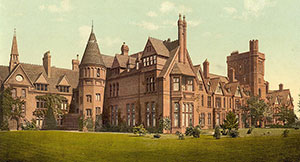
Girton Gollege, Cambridge
When, in 1869, Emily Davies set up Girton College (with backing from Barbara Bodichon) she was faced with just the kind of ridicule that had earlier been directed at Cobbe. Davies had to tread carefully—especially as she aimed to open ‘A college like a man’s’. In 1868, the year before the college opened its doors, she had observed that ‘the best girls’ schools are precisely those in which the ‘masculine’ subjects have been introduced’. The subjects that she was referring to were mathematics, Latin and Greek. When it came to the contentious issue of higher education for women, Davies was convinced that only if women succeeded in subjects held to be prestigious for men would their educational achievements be recognised as equally valid. She rejected any idea of a special system or curriculum for women because, to opponents of women’s higher education, ‘different’ would automatically mean ‘inferior’.
Emily Davies put these ideas into practice the following year when she opened a residential college for women in Hitchin. She had been working to prepare the ground for this venture; earlier she had persuaded the Taunton Commission to include girls’ education in their investigation into education in England. They reported in 1868, concluding that there were serious weaknesses in girls’ intellectual training. As a result of this, girls schools were included under the Endowed Schools Act of 1869.
Davies choose Hitchin as a location for her college because it was a safe and ‘seemly’ distance from the men’s colleges in Cambridge. (Davies did not want to cause any scandal occasioned by a mixing of the sexes.) The initial premises soon proved too small and in 1893 a move was made to new purpose-built buildings, some four miles distant from Cambridge, at Girton. Again, Davies wanted her ladies to be a safe distance from the men’s colleges—although it was a long haul for the male dons who Davies persuaded to come out to teach.
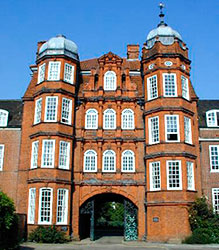
Newnam College, Cambridge
Newnham Hall, which developed in 1875 from Mrs Eleanor Sidgwick’s lecture series for women in Cambridge (later becoming Newnham College) operated a different philosophy to Girton. The Sidgwicks (Henry and Eleanor) saw their women’s college as a beacon with which to reform the whole university system, so they did not make their students conform to the rules of the men’s colleges. Instead they tailored the curriculum for their female students, and allowed women to study part time and take longer to prepare for examinations if needed. This was anathema to Emily Davies and the relationship between the two, first, women’s colleges at Cambridge was often tense. Oxford opened two halls for women in the 1870s too, Somerville and Lady Margaret Hall.
That Infidel Place
All of these colleges, but Girton in particular, attracted a lot of a criticism to begin with, indeed the term ‘Girton girl’ applied to a daughter could strike fear into a parent’s heart. One Rev. famously called Girton College ‘That Infidel Place’ and it was denounced from more than one pulpit. Opponents claimed that Girton and women’s colleges like it (especially residential ones) posed a threat to the family by tempting women away from their natural and proper role: that of a wife and mother. Conservative clergymen joined doctors and parents in condemning higher education for women as unchristian and dangerous. In the words of Oxford theologian Henry Liddon, the founding of Lady Margaret Hall was ‘an educational development that runs counter to the wisdom and experience of all the centuries of Christendom’. And, any threat to the family was, of course, also a threat to the social order.
The colleges sought to counter these criticisms by projecting conventional values and virtues, and by adhering to best behaviour. In many respects, these colleges were very conservative institutions—they were vulnerable and could not afford to be otherwise. Students were expected to convey ‘perfect womanliness’; they were inspected as to their dress and appearance, and chaperoned when attending lectures or social events. To argue their case, the colleges stressed that education would help, not hinder, a woman to perform her domestic, feminine role.
Could women cope with serious study?
In addition to the clergy, some of the loudest voices arguing against women’s higher education were those of the medical profession making a case from science for its detrimental effects on the ‘less robust’ sex. Particular concern was caused by the medical theory of ‘menstrual disability’, a belief that spawned a condition coined ‘anorexia scolastica’ which was believed to be a debilitating thinness and weakness resulting from too much mental stimulus, especially during menstruation. Pioneers of higher education took these warnings seriously. When Henry Maudsley published his oft-quoted ‘Sex in Mind and Education’ in 1874, arguing that women would suffer immense harm to their health by following study regimes similar to men’s, Emily Davies and her group were worried that it could hurt their plans as ‘there is much truth in it’. They were moved to action when William Withers Moore made similar arguments in an 1886 presidential address to the British Medical Association prompting calls for protective legislation for women of the educated classes analogous to that introduced for women working in factories and mines.
In response to these anxieties, women’s colleges carried out joint research on the health, marriage and childbirth patterns of former students. Their findings contradicted medical opinion in concluding that college-educated women were healthier and less likely to have childless marriages than their less-educated sisters and cousins. Another way in which educational pioneers sought to counter health fears, and to reassure female students and their families, was to include medical facilities within women’s colleges, as was done as part of Girton’s expansion in 1876. Equivalent facilities were not considered essential at men’s colleges.
Mathematics – too hard for women?
A particular problem was anticipated when women attempted hard men’s subjects, particularly mathematics. Even Sara Burstall (who was an early student of mathematics at Girton and who became Headmistress of Manchester High School for Girls) could at times be ambivalent to mathematics’ place within female programmes of study. Echoing Herbert Spencer’s principle of the ‘conservation of energy’, she argued in 1912 that teaching girls mathematics required too much teaching for too little return, consequently ‘We ought to recognise that the average girl has a natural disability for Mathematics. One cause may be that she has less vital energy to spare ….’ Spencer believed that female evolution, meaning intellectual evolution, had stopped at a stage before man’s in order to preserve vital organs for childbirth. If a woman undertook rigorous ‘brain work’ such as mathematics, energy could be diverted from her reproductive system, threatening fertility and general wellbeing.
Any question mark over women’s ability to do mathematics appeared to have been squashed when, in 1890, Philippa Fawcett of Newnham College beat the top male student (or senior wrangler) in the mathematics tripos. This was a great achievement. Mathematics was the elite Cambridge degree for men until the 1890s and Philippa beat him by a considerable number of marks, gaining attention in the national press. (Philippa was the daughter of the suffrage leader and Langham Place associate Millicent Fawcett.)
Women denied degrees
But studying at a woman’s college at Cambridge or Oxford, and passing the examinations, did not mean that women received degrees. To use Girton as an example, the college was not linked to the University but maintained an unofficial relationship with it until well into the twentieth century. Women were not awarded degrees on an equal basis to men at Cambridge until 1948, partly because if women had degrees they would also have the privileges that came them, i.e. equal status, voting rights and a share in the governance of the institution.
At Cambridge and Oxford the process of allowing women full access to study and to degrees was piecemeal. First exams were opened to women in certain subjects (1881 Cambridge; 1884 Oxford). At this time the women’s colleges were still reliant on friendly dons to teach the women and send over the examination papers. Eventually university lectures began to open up to women, although this was always at the discretion of the lecturer. In Cambridge the question of awarding degrees to women caused bitter controversy. The question arose (again) in 1897 and was overwhelmingly defeated, provoking near riots in Cambridge by university men opposing the move.
Quite this level of discord was not so apparent at Oxford University, although Oxford had been less receptive than Cambridge to the idea of women’s colleges. According to historian Janet Howarth, supporters of women’s education in Oxford did not seek the role of pioneers and by the time that Somerville and Lady Margaret Hall opened in 1879, with twelve and nine students respectively, over 300 women had already passed through Girton and Newnham Colleges. Although Somerville and Lady Margaret Hall were joined by St Hugh’s in 1886 and St Hilda’s in 1893, the number of women students at the Oxford colleges remained small compared to those at Cambridge. This slighter presence was reflected in the lack of formal connections between the women’s colleges and the University. Whereas Cambridge had opened mathematics and other examinations (although not degrees) to women on an official basis in the early 1880s, the Oxford halls for women remained independent and unrecognised until 1910. Although women were allowed to sit some examinations from 1884, including mathematics, the University was careful to distance itself from any seeming public endorsement. Technically, Oxford women were examined by the ‘Delegacy of Local Examinations’ which had merely been granted the right to make use of undergraduate examination papers.
Women were finally awarded degrees at Oxford in 1920 but in Cambridge the women were denied again in 1921, having to settle for titles of degrees only (called, inevitably, the ‘BA tit’). This time some men of the university celebrated victory over the women by using a handcart as a battering ram to destroy much of Newnham College’s entry gates. Cambridge women were now trapped on the margins of the University. They could hold University posts (twelve women were appointed as teachers in 1926 and Dorothy Garrod, a Fellow of Newnham, was elected Professor of Archaeology in 1938) but women could not speak or vote in the affairs of their own departments or of the University as a whole. Finally in 1948 the women were admitted to full membership of the University, although the University still retained powers to limit their numbers (and did so quite stringently until the 1970s).
Beyond Oxbridge
The University of London is usually credited as the first institution to open its degrees to both sexes on an equal basis (except for medicine) in 1878, but the pattern of women’s admission is complex and much depends on definitions. London’s evolution was very different to that of its Oxbridge counterparts; it was formed in 1836 as an examining body and because of this imposed no residential requirement on candidates presenting themselves for examination. This not only benefited women wishing to study independently at home, it also became a route for women ‘graduates’ of Cambridge and Oxford to gain the formal degree qualification denied them by their former institutions. After 1898 the University became a federal ‘Teaching University’ and began offering courses in its constituent colleges. In 1907 University College London (which in 1878 had also opened degree programmes in the Faculties of Sciences, Arts and Laws to women) ceased to have a separate existence and was incorporated into the University of London as, earlier, had other women’s colleges in London.
Bedford College: In 1849 Elizabeth Jesser Reid founded a ‘Ladies’ College’ at 47 Bedford Square which became Bedford College in 1869; there is a plaque in memory to her there today. Jesser Reid (1789-1866) was a Unitarian, anti-slavery campaigner and philanthropist. She married John Reid in 1821, but he died a year later leaving her a wealthy widow with money enough to support the women’s causes most dear to her.
Elizabeth Jesser Reid’s aim was to elevate ‘the moral and intellectual character of women, as a means to an improved state of society….. we shall never have better Men til Men have better Mothers’ (letter, Reid to Henry Crabb Robinson, 1858). In her aim to produce ‘better Mothers’, Reid was not alone among early pioneers of women’s education. These women, concerned about causing controversy, frequently voiced the argument that higher education would make women better wives and mothers. Campaigners took one step at a time and did not regularly call for women, even those educated to degree-level, to have the same opportunities and roles as their brothers. The concept of a ‘liberal’ education—one that developed the intellect and person but was not vocational or linked to any profession— was important to Jesser Reid, and to the founders of women’s colleges at Cambridge some twenty years later. Nevertheless, women at Bedford College studied science as well as the arts and, in the late 1880s, six laboratories were erected for the purpose at a cost of £6000. This move won the College strong praise from the scientific journal Nature (Jan 23 1890).
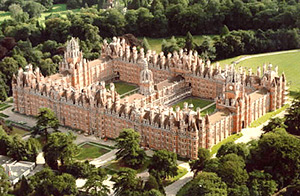
Royal Holloway College, Egham.
Royal Holloway College was founded by the businessman and millionaire Thomas Holloway in 1879 in memory of his wife Jane. The College, with its grand and imposing Founders Building modeled after the style of a grand French chateau, was opened by Queen Victoria in 1886. By 1897 there were over 100 women resident as students, many preparing for examinations of the University of London or Oxford, but others not seeking to sit examinations or gain any qualifications at all. The College Calendar for 1897-8 states that the Founder believed that the education of women ‘should not be exclusively regulated by the tradition and methods of former ages’ but should include ‘studies and sciences which the experience of modern times has shown to be the most valuable…’ (p. 22). In the late 1880s and early 1890s Biological, Chemical and Physical laboratories were established at Royal Holloway and there was a strong programme of teaching in the sciences including mathematics and astronomy, botany, physics, chemistry and zoology. Women residential students at all colleges were generally subject to strict regimes of care and control designed to guard against any ill health brought on by ‘strong brain work’ and to reassure parents. During the first decades at Royal Holloway students’ health was recorded, they were expected to attend gymnasium classes twice a week and were weighed and measured every term.
Other opportunities for higher education for women in London were offered by Kings College and Westfield College. King’s College ‘Ladies’ Department’ was established in Kensington Square in the 1880s. This was successful and student numbers grew well into the 1900s. Due to administrative reorganisation in 1908, women students in the arts and sciences transferred from Kensington to the Strand and Kensington became a separate site for Household and Social Sciences. From 1918 King’s welcomed women students alongside men when it became the first mixed medical school in London. Westfield College for women was founded in Hampstead by Constance Louisa Maynard (1849-1935) and Ann Dudin Brown (1823-1917). It was conceived as a Christian institution (Maynard held weekly bible classes) and prepared women to sit for the examinations of the University of London. Westfield was always a relatively small college, limiting the number of students to 60 at any one time. A significant number of early Westfield graduates joined missionary organisations.
In 1900, Bedford, Royal Holloway and Westfield Colleges, together with Kings, were admitted as a schools of the new University of London when it was constituted as a teaching university. A great number of the graduates of all of these early higher education colleges for women went on to be teachers (after all, there were few other opportunities open to them except that of wife and mother). At this time, too, the provincial Universities in England were receiving their charters and many opened their doors to men and women on equal terms (for example Bristol in 1909 and Leeds in 1904); the federal Victoria University, from which Manchester and Liverpool originated, admitted women on equal terms from 1880. In addition, the ancient Scottish universities allowed women access to most departments from 1896; the University of Wales was founded on equal terms in 1893, and Trinity College Dublin allowed women degrees from 1903. The production of competent and ambitious teachers was a great dynamic in the growth of good girls’ schools able to equip their pupils for higher education … and so the movement for women’s education continued to progress.
By Claire Jones; with thanks to Steven Rhodes and Vicky Holmes, Archivist, Royal Holloway, University of London.
Reading/References
Dale Spender, ed., The Education Papers: Women’s Quest for Equality in Britain 1850-1912 (Women’s Source Library).![]() A collection of contemporary writing on the subject with a thoughtful introduction.
A collection of contemporary writing on the subject with a thoughtful introduction.
Melanie Phillips, The Ascent of Woman: A History of the Suffragette Movement![]() . Very accessible: a good read which covers the Langham Place Group, education and the ideas behind suffrage for women.
. Very accessible: a good read which covers the Langham Place Group, education and the ideas behind suffrage for women.
Key texts from leading historians of this topic:
Carol Dyhouse, No distinction of Sex? Women in British Universities, 1870-1939 (Women’s History)![]() (Routledge, 1995)
(Routledge, 1995)
Janet Howarth ‘ ‘In Oxford but… not of Oxford’: The Women’s Colleges’ in Brocks and Curthoys ed., The History of the University of Oxford, Vol. 7, part 2![]() (Clarendon Press, 2000)
(Clarendon Press, 2000)
Rita McWilliams Tullberg, Women at Cambridge![]() (Cambridge University Press, 1998)
(Cambridge University Press, 1998)
External Links: Women at Queen Mary Online: a virtual exhibition includes a history of Westfield College and distinguished past students.




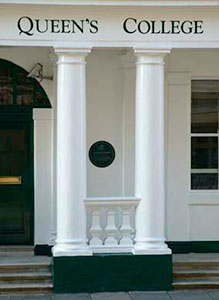
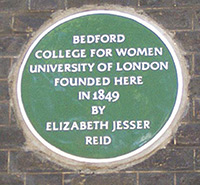
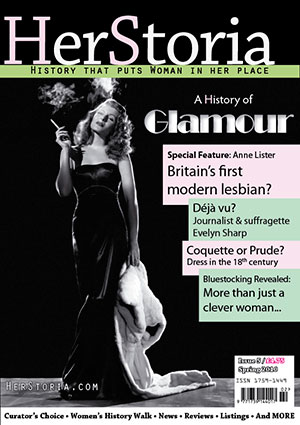
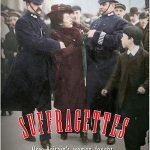
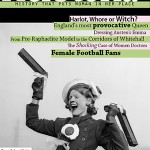
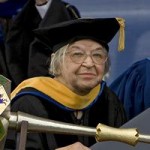
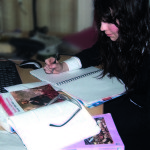
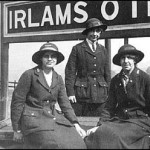
[…] Women’s access to higher education: An … – Women’s struggle for higher education did not begin in the mid-late nineteenth century. There had been calls for women to receive educational … […]
You might be interested to know that the first women graduates at Calcutta University, India, were given University degrees in their respective subjects very early. Chandramukhi Basu and Kadambini Ganguly were granted their bachelor’s degrees in Arts in 1882, which were handed to them at the University Convocation of 1883.
[…] the intellectual power and leadership capacity of women. They silenced the doubters and critics of women’s education while also revealing an irresistibly powerful market of talent that the […]
[…] the intellectual power and leadership capacity of women. They silenced the doubters and critics of women’s education while also revealing an irresistibly powerful market of talent that the […]
[…] the intellectual power and leadership capacity of women. They silenced the doubters and critics of women’s education while also revealing an irresistibly powerful market of talent that the […]
[…] Discover more about the fight for women’s education in England here: http://herstoria.com/?p=535 […]